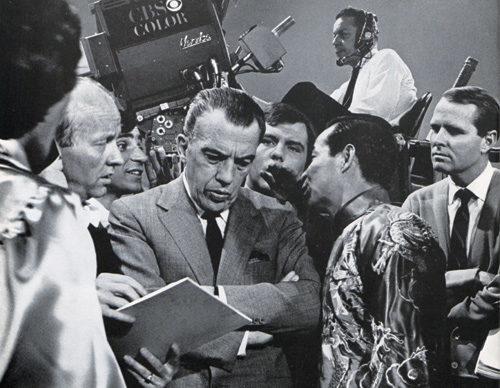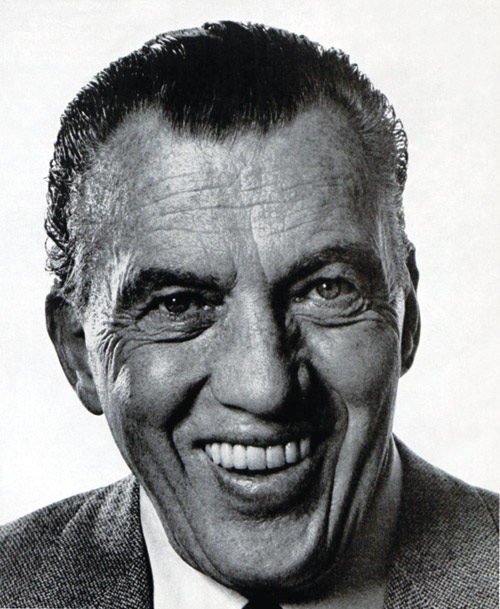What Makes Ed Sullivan Tick?

 The Ed Sullivan Show was America’s top-rated variety program, and Ed himself was an icon, despite his awkward mannerisms and the belief by many that he was talent-free.
The Ed Sullivan Show was America’s top-rated variety program, and Ed himself was an icon, despite his awkward mannerisms and the belief by many that he was talent-free.
—Originally published April 20, 1968—
The Lovin’ Spoonful sings. Stage left stands the host, watching a monitor. Arms akimbo, tongue poking about in his cheek as though seeking surprises, expression unmistakably one of delight — or distaste, or disbelief, or boredom. Out there sits the studio audience, enthralled. The adolescent girls wail ecstasy. Mrs. Robert Lindquist, visiting from Richmond, Virginia, grins happily. “Oh-h-h, my!” she says. “Ed Sullivan — in person. That Ed is just the greatest. He’s — well, he’s like Howard Johnson’s. Do you know what I mean? Wherever you are, there’ll always be good food and clean restrooms.”
On the face of it, Sullivan’s success appears to be a terrible mistake. He twitches. He mumbles. He flubs. Once, presenting actress Dolores Gray to bolster a musical in which she was appearing, he said, “And here is the actress now starving in a new show …” His tastes, by current standards, are consummately square. He never seems quite at ease with a rock-’n’-roll act; but Smith and Dale, the venerable vaudevillians, brought tears to his eyes when they appeared on the show (“Vat business you in?” “Cleaning and dyeing. In de dyeing business I’m cleaning up, and in de cleaning business I’m dying”).

No one has ever credited him with a sparkling personality (“He has a certain indefinable nothing,” a critic wrote), or cultural insight, or performing talent. Yet at NBC and ABC, platoons of anguished executives have been pondering the secret of his success for years. Even at CBS, the officials of his own network don’t know the answer. “If someone walked into my office and said he wanted to be just like Ed Sullivan, I’d throw him out,” says Michael Dann, a CBS vice president. “Nobody should want to be like Ed. He is all wrong for television. He just happens to be great.”
At NBC, another freethinker speaks: “People watch Sullivan so they can hate him — it’s mass masochism,” says Paul Klein, a network vice president. “But listen, you think we want to knock him off. We don’t. Who watches Sullivan? Little old ladies. Every year more of his audience dies from old age. We can’t sell that audience. We’re not even trying to take it.”
Talk like this doesn’t bother Sullivan. “They’ve been trying to knock me out of the box for years,” he says, “and they can’t do it. My show has lasted all these years because it is a damn good show. I run it, and I know what the people want.”
Even his most caustic critics concede that Sullivan has the showman’s instinct, honed by experience, for the right act, the right moment, the right showcase. In London a few years back, he read in the newspapers that the queen’s plane had been delayed in takeoff because London airport was aswarm with youngsters awaiting the arrival of a vocal group — then virtually unknown in this country — called the Beatles.
Sullivan invited the Beatles’ manager to New York to discuss an appearance on the show. The manager came, bearing tough terms — among them, a demand for top billing. The show’s producer, Robert Precht, considered it outrageous.
“Bob,” Sullivan said, “there must be something here,” and closed the deal. The first of the Beatles’ three appearances netted Sullivan the highest rating in the history of his show.
—“Let’s Really Hear It for Ed Sullivan” by Martha Weinman Lear, April 4, 1968
